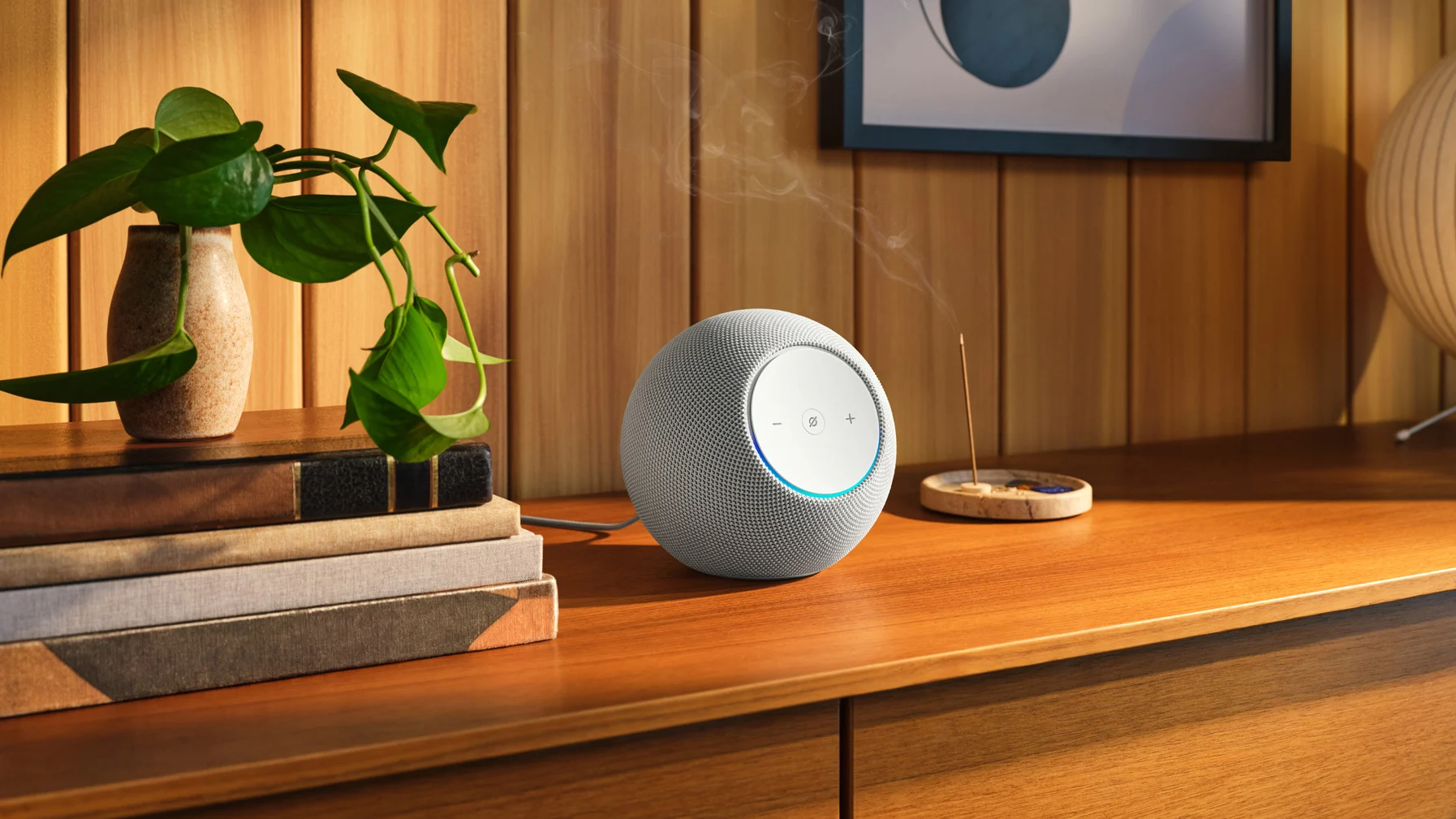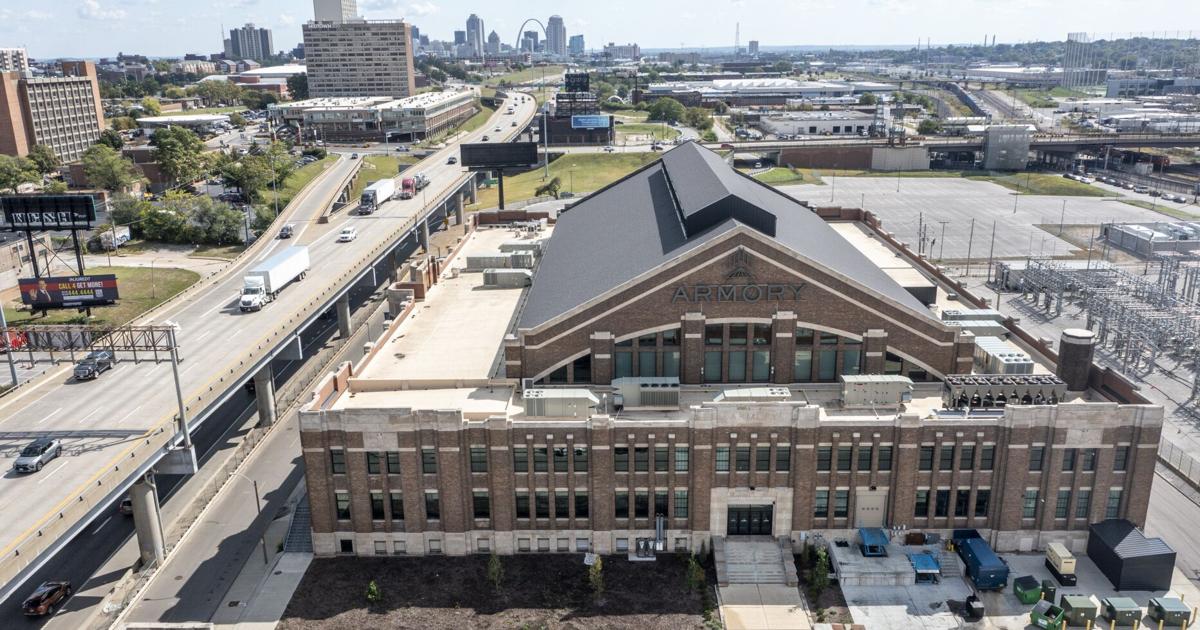
Amazon’s new Echo Dot Max is a $99 ball. Its Echo Studio is a $199 ball. Its Echo Show is a tablet (starting at $179), attached to a ball.
For its grand refresh of its Alexa-powered line of speakers and tablets, Amazon spent three years rethinking the foundations of its audio engineering to conquer the home theater market in the most spherical manner possible. “Legitimately—they sound really good,” says our senior editor Liz Stinson, after a listening test.
But from my own discussions with the design team, it’s clear that what Amazon has created are not just new voice assistants, or even mix-and-matachable speakers capable of creating a 3D soundscape for movies and music in your home. What these new Echo products are supposed to do is enable a more intuitive (and intimate, and surveillant) AI for home tomorrow—one that doesn’t just hear what you say, but senses what you do.
The industrial design behind Amazon Echo
This is not the first time that Amazon has snuck Alexa into a little speaker ball. Its existing Echo Dot is already exactly that. But the Dot’s sound quality is middling at best. If you wanted something that sounded better from Amazon, you had to buy a larger Echo Studio: a big cylinder.
Subscribe to the Design newsletter.The latest innovations in design brought to you every weekday
Privacy Policy
|
Fast Company Newsletters
When Amazon talked to its own customers, people often said it was just too large for them to buy. And that’s because our entire culture has been wooed by tiny Bluetooth speakers with good enough audio quality.
“If I can get acceptable sound out of a small device, that’s what I expect now,” says Phil Hilmes, Director, Audio Technology at Amazon Lab126.
Amazon’s goal was to make a more competitive wave of smaller Echos that still sounded superb—even if that meant they cost more. So they doubled down on space efficient spherical designs across the new Echo line. To a casual observer, nothing looks all that new. But once you actually remove the original Dot’s candy shell, it’s clear just how differently the new Echos are built compared to the old ones.
The old Dot was basically a single driver (a sound emitter), wrapped in a block of plastic housing that kept it positioned inside the ball.
The new Echo speakers get rid of this housing entirely. A single driver has been replaced with multiple that specialize in different frequency ranges. These drivers connect directly to the outer shell, which doubles as an exoskeleton. This design leaves lots of empty space inside the sphere for tweeters and subwoofers to float, blowing air out of the speaker to make sound.
“At the end of the day, when we want to get more sound, it’s all about how much air can we push out of this thing?” says Hilmes.
The Echo Dot Max has two drivers—one tweeter for the highs, and a larger woofer for mids and lows. They aim right at you for maximum clarity. Amazon telegraphs what “right at you” looks like by placing a new, flat control panel on the front of each speaker. Amazon says the Dot Max is one of the smallest two-way speakers ever created.
The larger Echo Studio—promising Dolby Atmos sound—has three drivers that handle highs and mids. It also features a 4-inch subwoofer for the bass.
Subwoofers are large by nature; they push more air and have bigger diaphragms to make those low sounds. When Richard Little, senior manager of audio technology at Amazon, holds up the Studio’s subwoofer—a cone the size of a coffee mug complete with saucer—I cannot imagine how it fits inside.
advertisement
In fact, it barely fits. It fires straight down into the base, and the entire bottom of the Studio has been perforated to allow air out. Meanwhile, those three other drivers can only squeeze in by being integrated right into the subwoofer’s own structure. It’s basically a wad of sound structures. Clever geometry and some small plastic caps are all that keep this pile of drivers sounding clear rather than buzzy and cacophonous.
Amazon is wrapping the Echos in a new, 3D-knit fabric that offers a more luxe texture but doesn’t dampen sound. I actually think that’s a missed opportunity. The black cannonball design is still jarring, even when wrapped in domestic-friendly textiles. So why not lean into the unique shape? The internal components are so interesting that Amazon could have created a clear speaker celebrating high-end audio with throwback vibes like Nothing has been capitalizing upon.
“We want to work our way [there],” says Pete Kyriacou, VP of product at Amazon, who admits Amazon has considered the more head-on audiophile approach. “And we want to earn that credibility through people listening to our devices.”
Everything else the Echos can do
The new Dot Max and Studio configure themselves automatically to project sound inside any room, and the more you add, the more the speakers can position 3D audio in space. This is particularly exciting for the team as it’s planning that the Echo can be part of a come-as-you are home theater setup.
One in front of your TV acts something like a soundbar. Another stuck on a shelf to the side widens the soundscape—with each speaker compensating the right frequencies to sound balanced. Stick one behind your couch, and audio flies in from behind your head for full surround sound with three speakers. The system supports up to five, and the better 3D audio positioning is only available with the Studio, as the Dot Max doesn’t have Dolby Atmos support.
Optimization is automatic and constant. In fact, one of the most important parts of the audio is an AI that analyzes frequencies every moment, and tunes the power draw up and down across each individual driver dynamically to milk the most possible sound at any given moment. (The team tells me that this AI system doubles bass output through software optimization alone.)
But of course, while Amazon is focusing on audio quality, its vision for Alexa+ goes much deeper. The speakers will glow with a blue ring when you activate them, and as the conversation goes on, it dulls to something more akin to a smile than a circle—a nod to the Amazon logo that glows less brightly in your face.
“We’re finding what’s the right way to keep that light ring on without being intrusive,” says Kyriacou, noting that the smile gives “this human aspect of what you’re talking to.”
Beyond music
Inside all of the new Echo devices live various sensors, including Wi-Fi for mapping devices in space, ultrasonic proximity detection that knows where you are, vibration-reading accelerometers that feel the tremors of your touch (or perhaps footfalls?), microphones for your voice, and cameras inside the two Echo Show tabletop tablets that can see who you are. For the first time, Amazon is assembling all of these sensors into an AI platform it calls Omnisense.
AI is incredibly powerful at discovering insights hiding in sensor data. And with Omnisense, Amazon will likely be able to detect subtleties in our habits that we can’t even imagine. But in the immediate, Kyriacou says it will allow Amazon to “start getting more proactive with Alexa.” That means these devices will know who is in the room, learn their routines (are they cooking or winding down with a book), and offer the right response (turn up the music? dim the lights?) for these moments. The Echo Show will see you coming, and change its own UI—perhaps from family photos to smart home notifications—as you move closer.
This sort of specific, contextually aware understanding has been a holy grail of the quite flawed promise of the smart home, and Amazon is redoubling its efforts to own the space through its latest wave of meticulously developed Echos. No doubt, Amazon’s storefront and services will move ever closer to our daily routines through speakers that are capable of harvesting new troves of largely invisible data.
And while it’s a crafty enough plan, I can’t help but wonder if there’s one significant flaw. To use the Echo Dot Max or Studio to watch movies, in particular, you need to be using a Fire TV. Amazon has a grand vision for taking over the smart home through your home theater, but it’s limiting its reach to the most ardent Amazon loyalists. Sure, Amazon has shipped more than 200 million Fire TV devices to date. But that’s a drop in the bucket compared to the billions of TVs in use worldwide.



